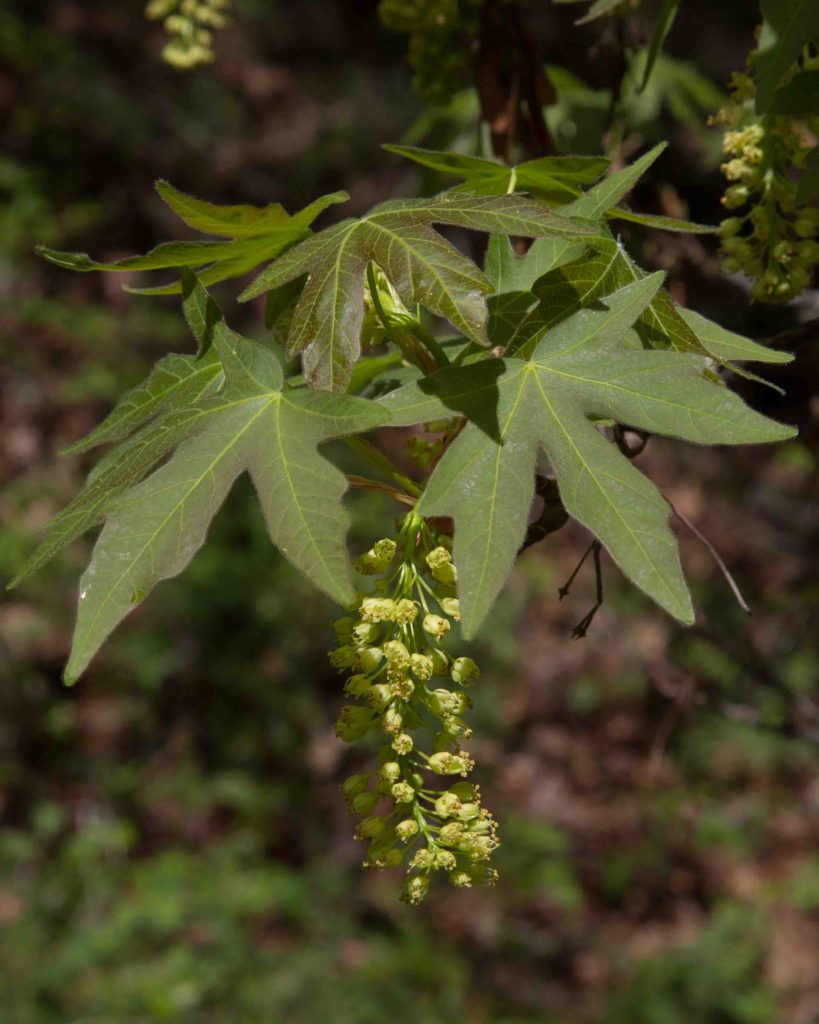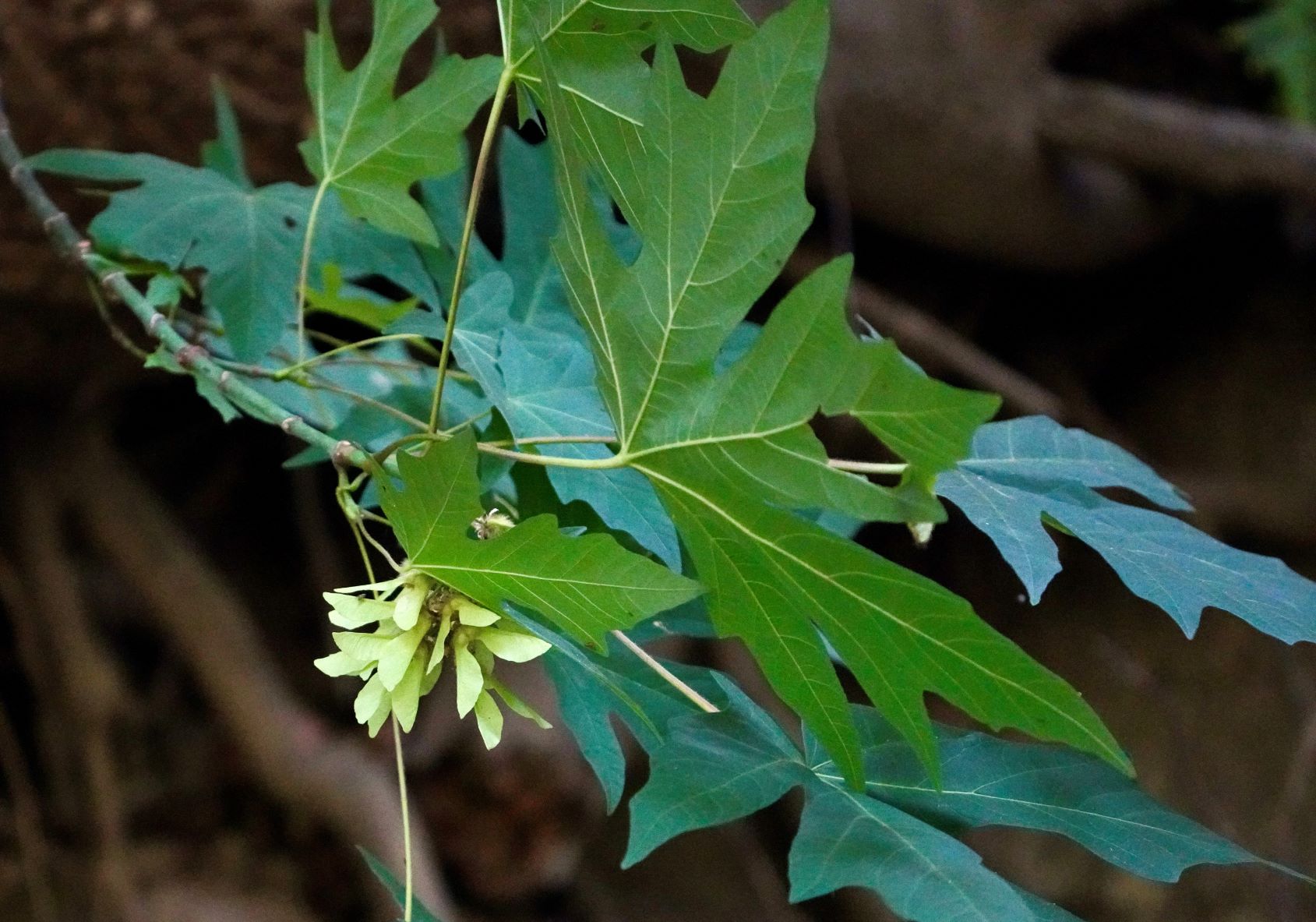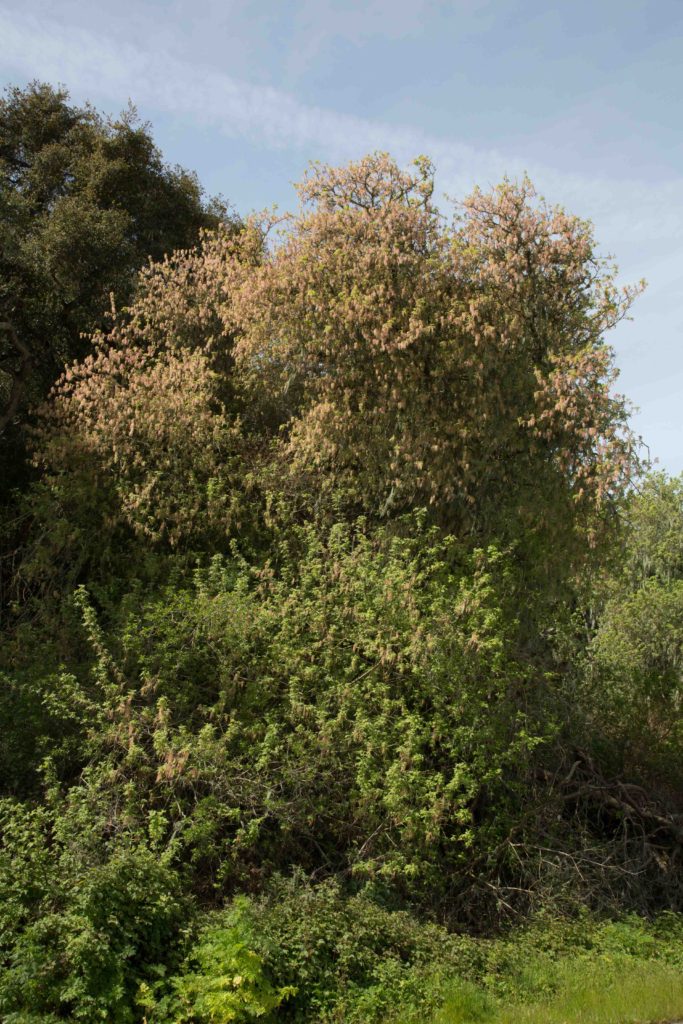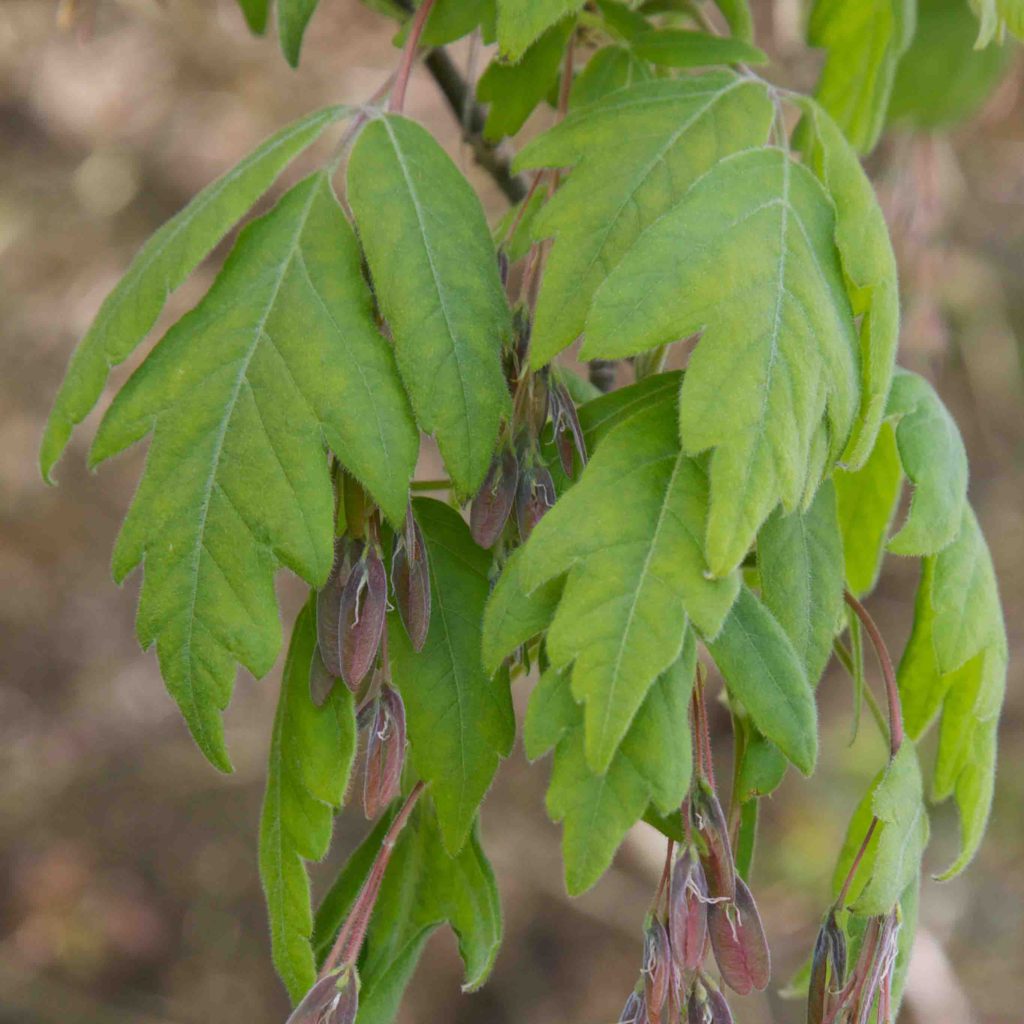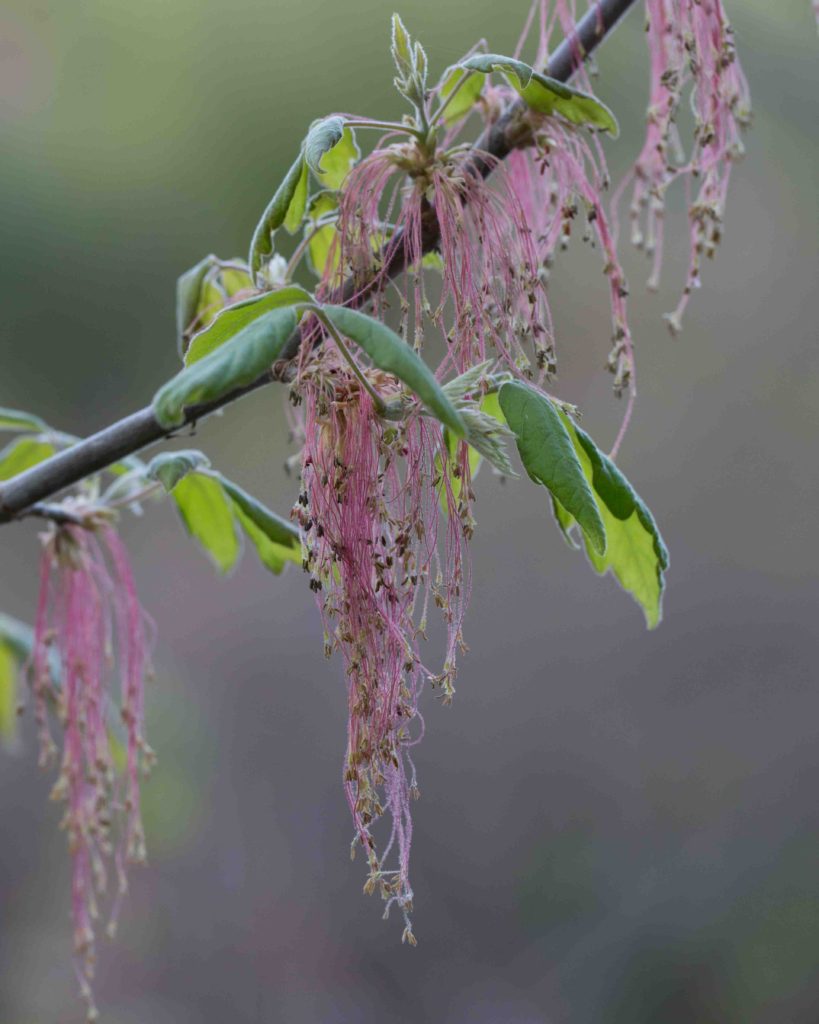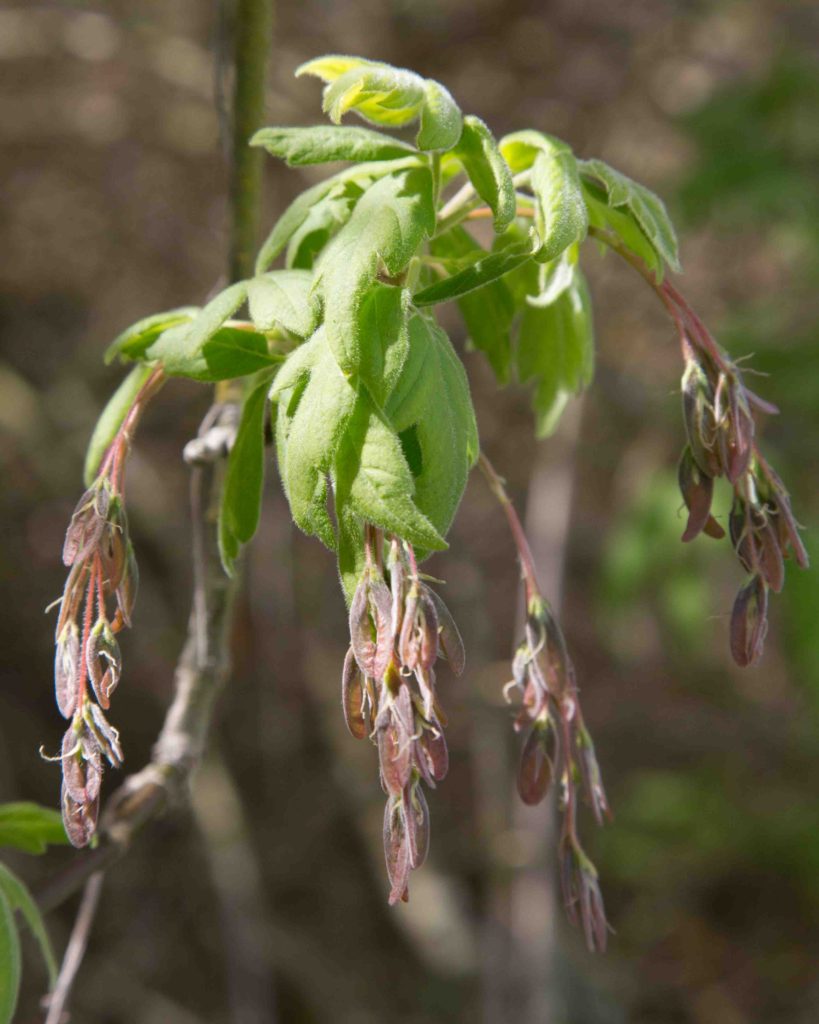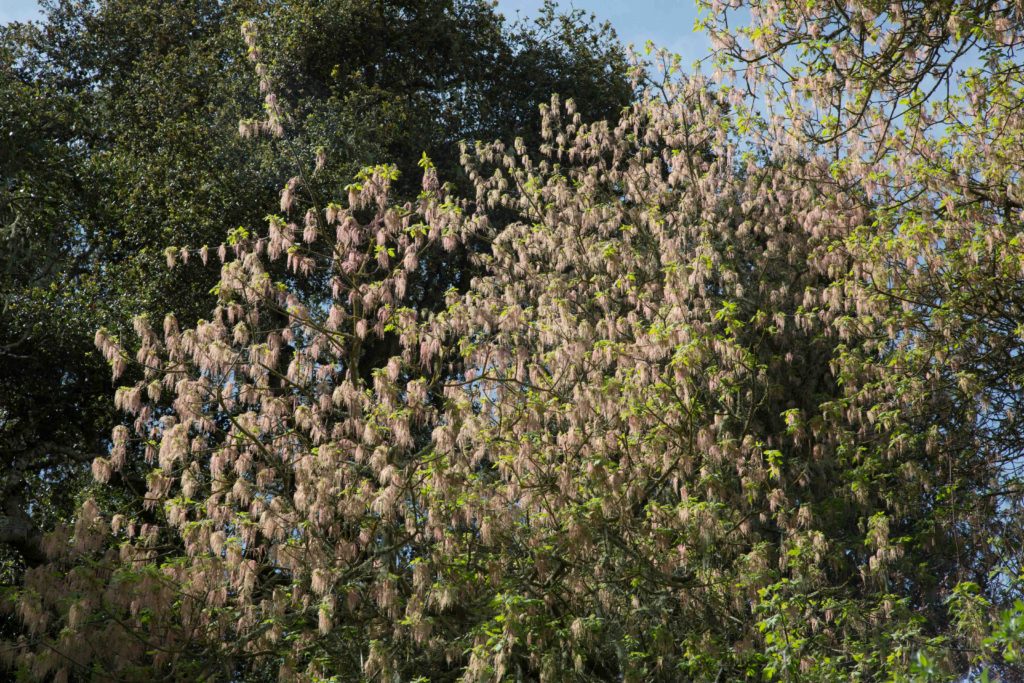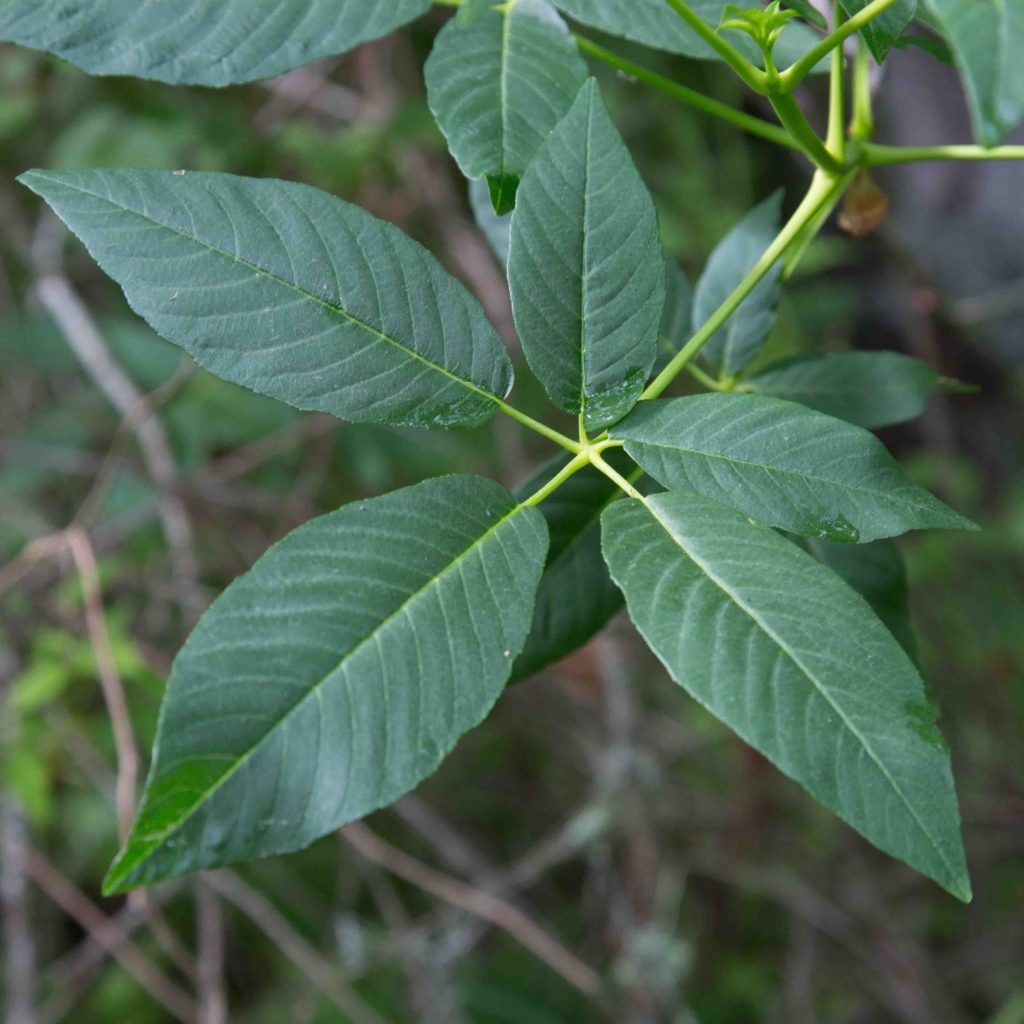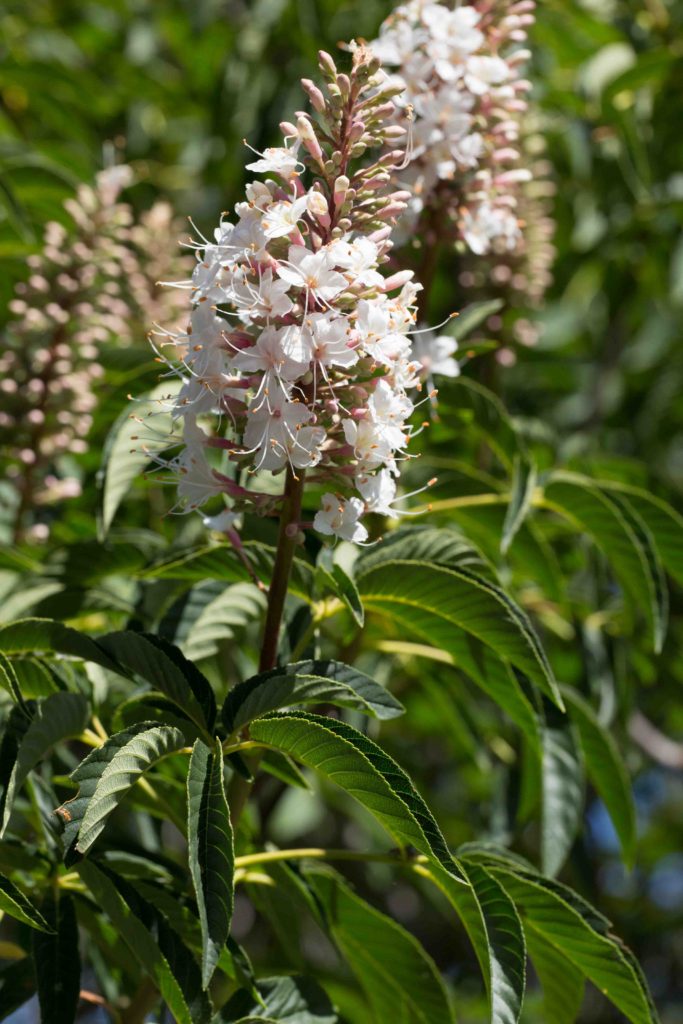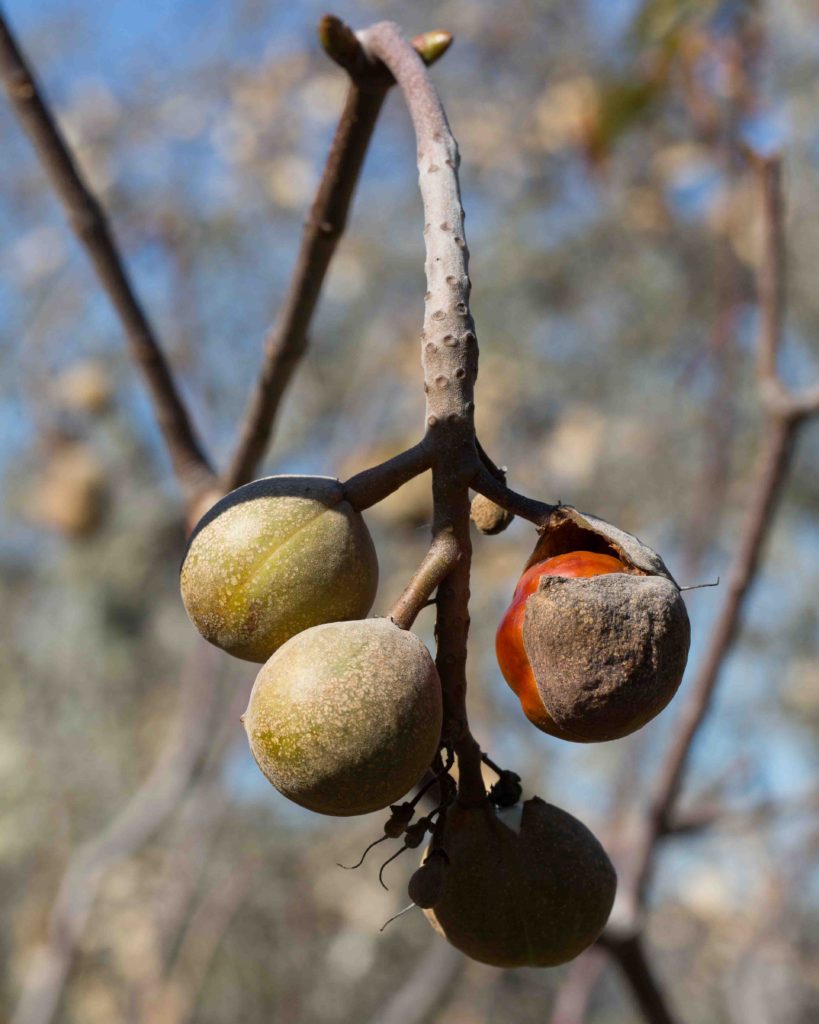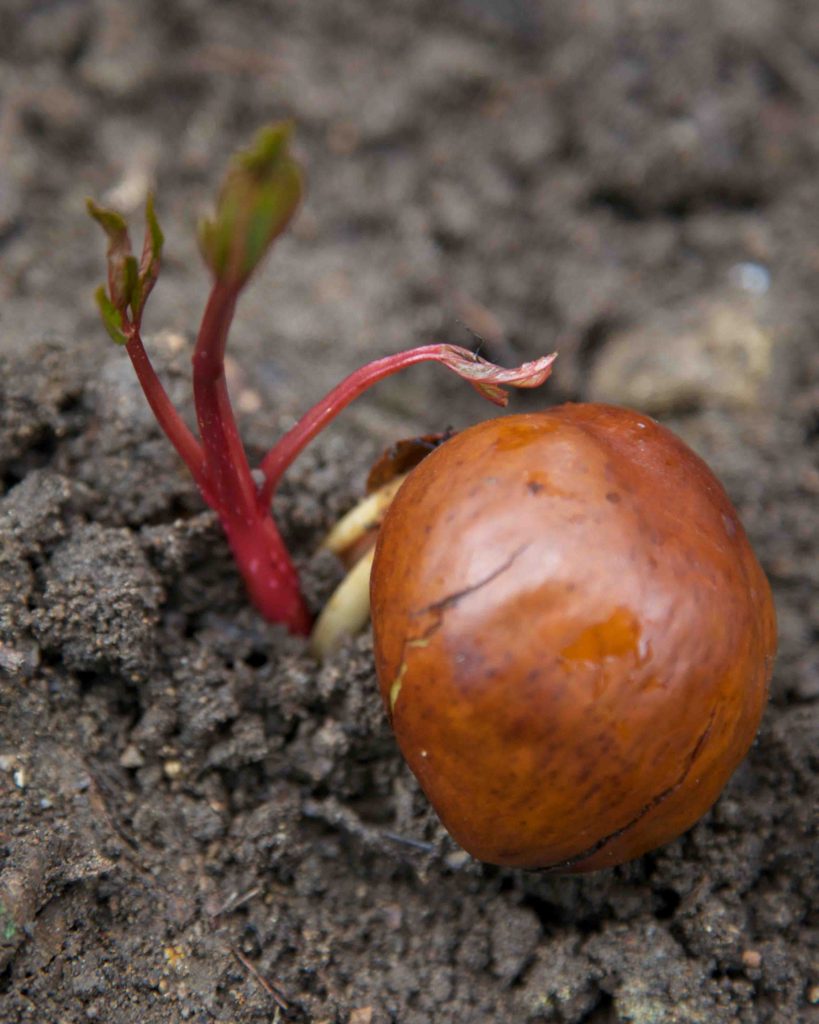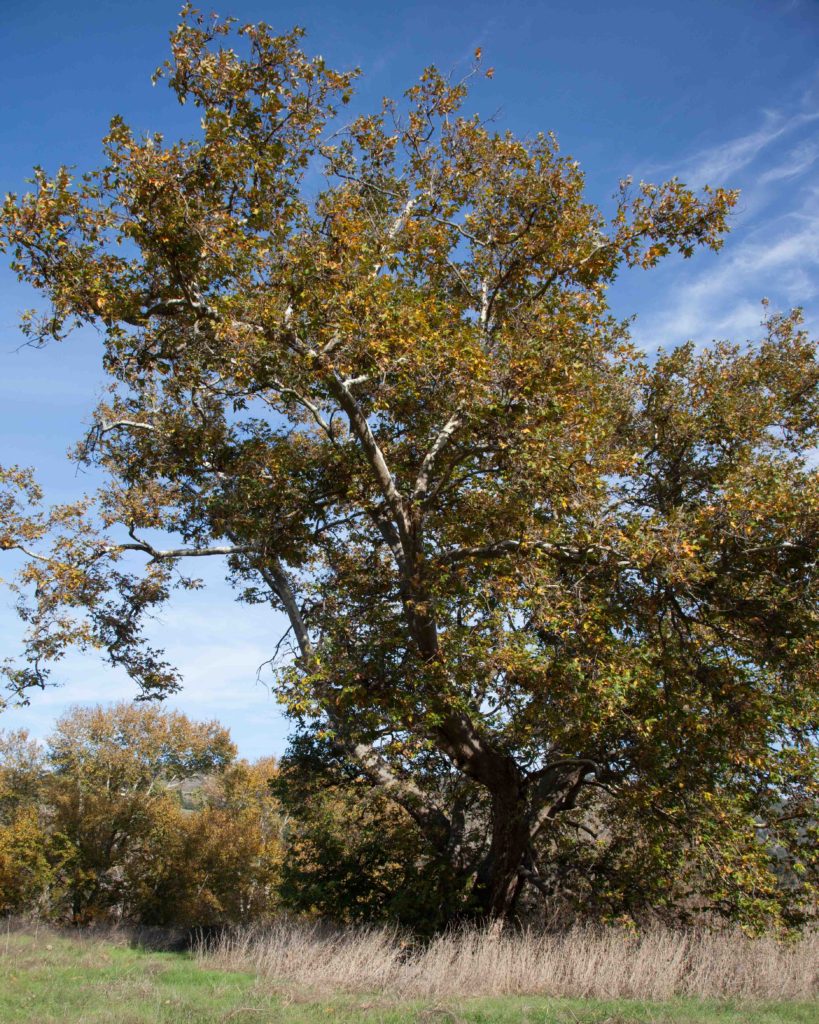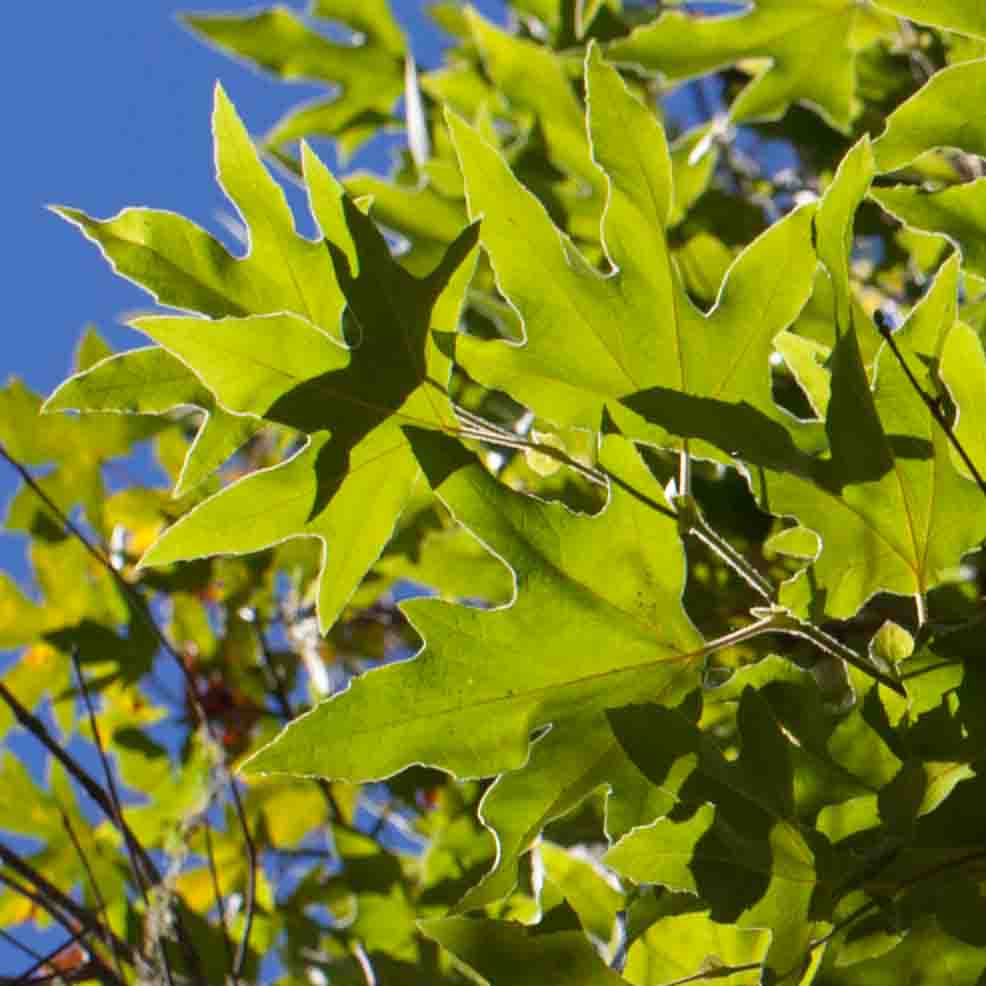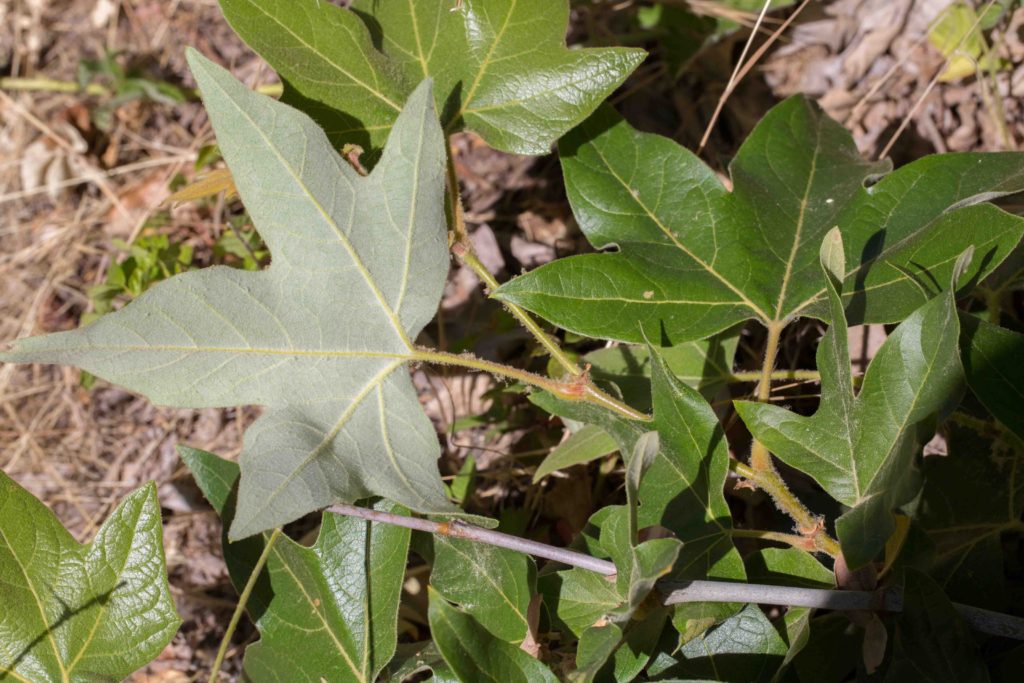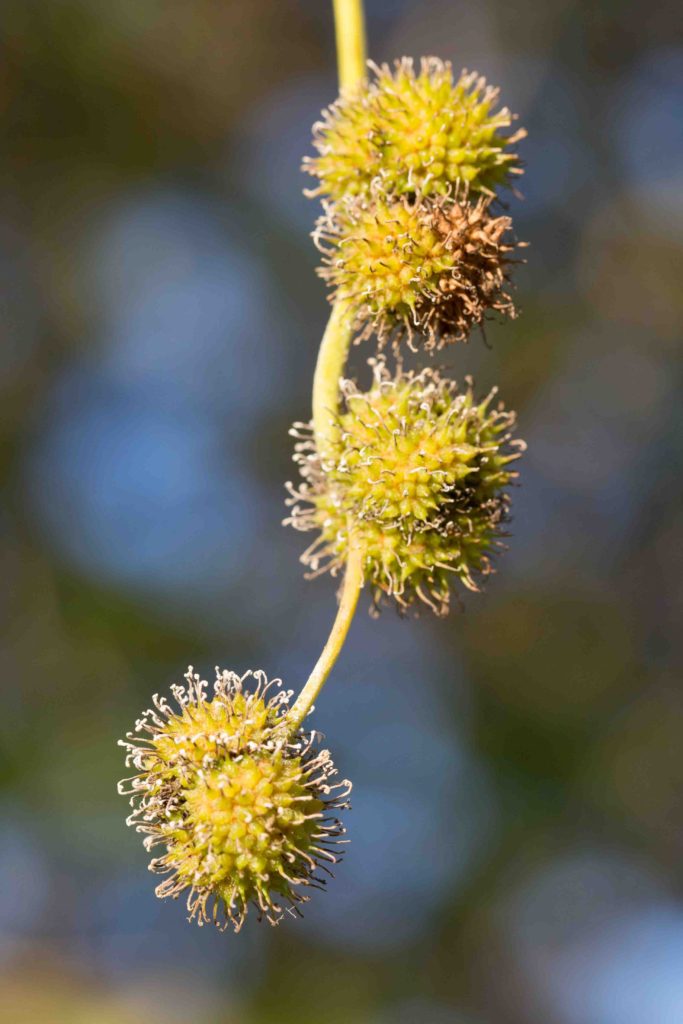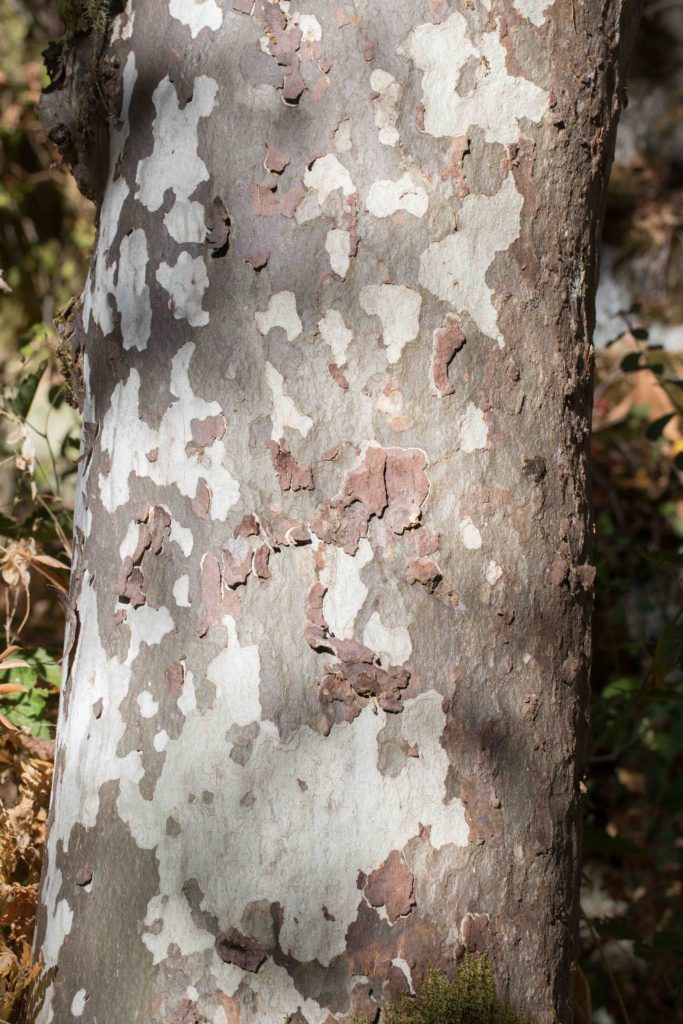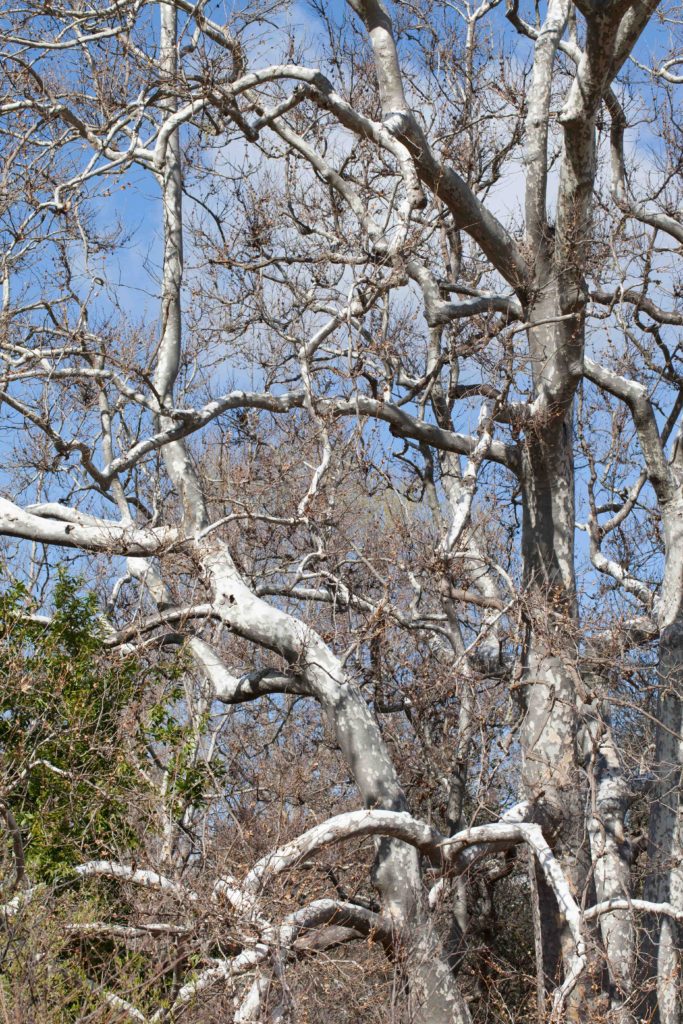Sapindaceae: Soapberry Family & Platanaceae: Sycamore Family
Big-leaved Maple – Acer macrophyllum
Height:
< 30 m
Habitat:
Streambanks and moist canyons
Notes:
This fine tree is monoecious and deciduous. It is one of the few that provides genuine fall color, even if not quite up to New England standards. It is most easily identified by its leaves. They are large, but rarely as large as the authorities suggest. They are usually no bigger than the leaves of California Sycamore (Platanus racemosa, see below), with which they are often confused. There are several distinct differences: see the 4th photo below, showing maple (left) and sycamore (right). The maple leaf has a much longer petiole. Its main veins all radiate from the point where the petiole meets the leaf blade (the two lowest lobes on the Sycamore leaf have veins splitting off from the adjacent lobe). The underside of the maple leaf is glabrous, not tomentose. It is always clearly 5-lobed, and the lobes are more diamond-shaped than triangular. The maple’s flowers and fruits are also quite different, the fruits being winged samaras. Finally, the bark is dark brown and deeply fissured in mature trees. Photo #3 below by CJH.
Box Elder – Acer negundo
Height:
< 20 m
Habitat:
Streambanks and bottom lands
Notes:
This monoecious and deciduous tree can be easily overlooked, but the male trees produce beautiful displays of flowers in March–April. The female flowers are less conspicuous, but the incipient fruits are clearly visible, in the form of paired samaras. The leaves are somewhat maple-like, but differ from the normal maple leaf in being pinnately compound with 3–5 (sometimes 7) leaflets, rather than simple and palmate like the Big-leaved Maple (Acer macrophyllum, see above).
California Buckeye – Aesculus californica
Height:
4–12 m
Habitat:
Dry slopes
Blooms:
May–July
Notes:
This is one of the most distinctive trees found in the county, and is particularly common on the Monterey Peninsula. It has striking flowers, pinkish-white, in erect 15–25 cm long spikes. Butterflies seem to love the flowers, but they are toxic to Asian and European honeybees. Fruits develop slowly over the summer months, becoming large brown capsules 5–8 cm across, with a felty outer husk. This splits open to reveal the large smooth seed inside, similar to the related European Horse Chestnut (Aesculus hippocastanum, not shown). These seeds readily germinate when conditions are right. The leaves are palmate with 5–7 lance-oblong leaflets, each 6–17 cm long. The tree is summer-deciduous, losing its leaves in late summer, an interesting adaptation to the dry conditions typical of our summer and fall. Large photo by CJH.
California Sycamore – Platanus racemosa
Height:
10–35 m
Habitat:
Streambanks, canyons & arroyos
Blooms:
Feb–Apr
Notes:
Generally found near streams or riparian corridors, this is a striking tree with a stout trunk, producing many crooked, irregular branches. The tree is deciduous, and has three distinctive features. First, it has large, 3 or 5 lobed leaves with short petioles, densely tomentose on the underside. Second, the outer bark tends to peel away, leaving blotchy smooth areas of inner bark in varying colors. The dark, fissured outer bark is often found only near the base of the main trunk. Third, the flowers and fruits are in 1–7 spherical heads, evenly spaced on the pendulous stem. European visitors may be confused by this tree, since it looks so different from the European Sycamore. This is actually an Acer (Acer pseudoplatanus, not shown) and the genus Platanus is most commonly represented by the London Plane, which adorns so many streets and squares in London. This tree is in the Platanaceae (sycamore) family; all the others on this page are Sapindaceae (soapberry).


